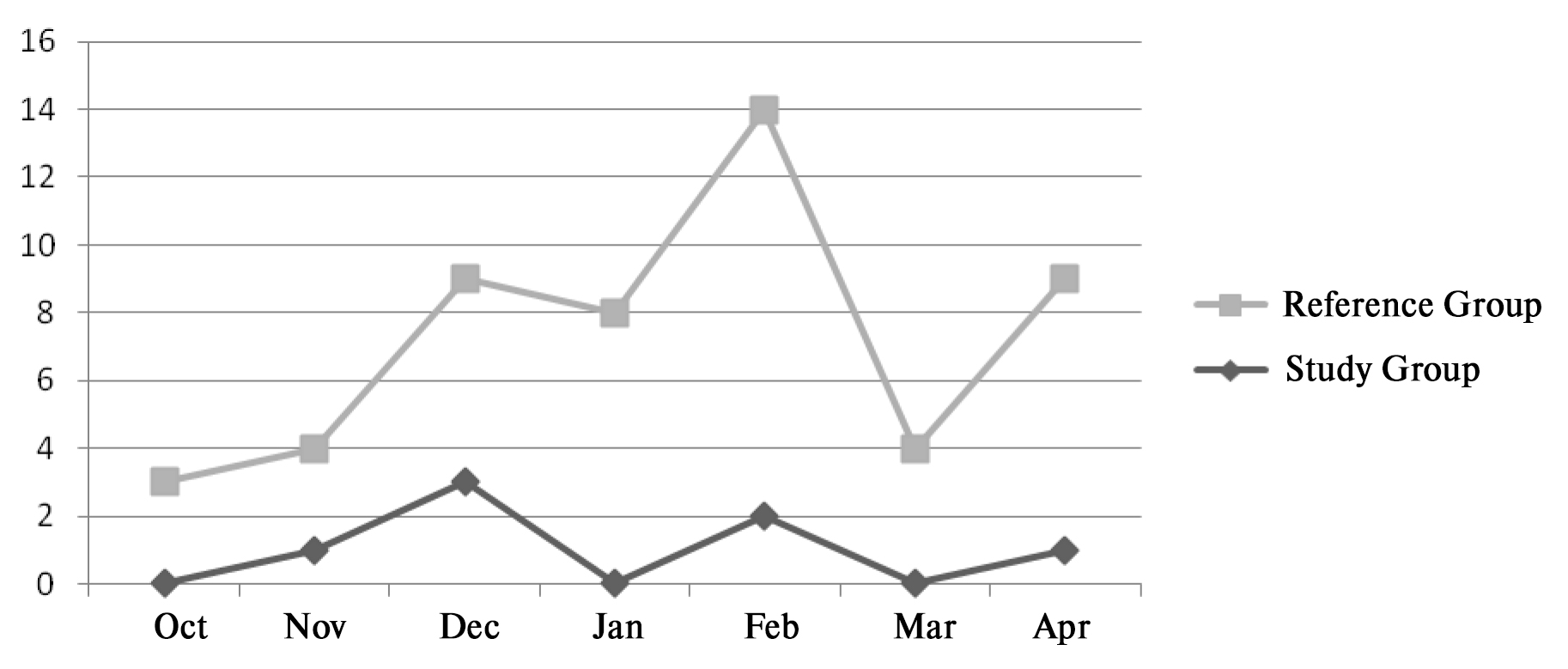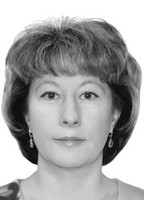Adaptive physical education at inclusive schools to facilitate mental and physical development of children with visual impairments
Фотографии:
ˑ:
Associate Professor, PhD A.S. Suntsova1
Dr.Sc.Psych., Professor A.A. Baranov1
Dr.Hab., Professor I.B. Vorozhtsova1
1Udmurt State University, Izhevsk
Keywords: inclusive education, inclusive education environment, adaptive physical education, children with health issues.
Background. The limitations on physical activity that have been recommended by physicians till recently in application to the people with visual impairments are no more supported by the modern science in fact [1]. It has been proved that reasonably selected sets of physical exercises may be helpful in preventing a variety of health disorders caused by hypodynamia and hypokinesia as they mobilize the bodily compensatory capacities, facilitate improvements in the working capacity of the ciliate muscle and strengthen the sclerotic coat thereby contributing to the intra-systemic compensation processes, i.e. training the sick organ. Role and effects of the modern adaptive physical education (APE) for health improvement and social integration of the people diagnosed with health disorders and limitations have been analysed in many theoretical and practical studies including those by M.A. Denisov, A.A. Dmitriev, V.S. Dmitriev, A.V. Sakhno, S.P. Evseev, L.V. Shapkova, L.N. Rostomashvili, R.A. Tolmachev, Y.Y. Zhukov, I.N. Pushkareva et al. It should be noted, however, that there are still quite a few issues with concern to the sport- and APE-inclusive education and training process design and management in application to the children with health impairments and the relevant methods and tools selection logics in the initiatives to improve the individual health conditions – still deserve to be studied more comprehensively. The main problem of the children with health disorders attending an ordinary school is due to the significant workloads they are exposed to in the education process that may be detrimental for their health condition, albeit these negative effects can be prevented and/or mitigated by APE being reasonably included as an obligatory component into the education process.
Objective of the study was to provide theoretical substantiations for a model set of adaptive physical education exercises applicable in the regular inclusive school education and training process as an efficient psychophysical development system for the children with visual impairments.
Methods and structure of the study. The model education environment that we have developed and propose herein for an inclusive school education was designed on the following principles: architectural accessibility (with a special emphasis on sports); due technical provisions for the education process customised for the special needs of the children; psychological, educational and correctional support of the children’s learning process; medical support with the relevant tests, stimulation and therapy of the vision system under doctor's supervision; and a set of adaptive physical education exercises applicable to all the children with no exclusions and designed based on the relevant health tests with the loads duly customized for the individual health conditions.
The novelty of the proposed experimental model is due to the medical support and APE practices being duly harmonized with the standard inclusive school education environment. The inclusive education and training process is designed to include the following: vision system protection and training regime during the lessons (by applied vision gymnastics); everyday physical practices including rhythmic exercises and team sports after the 3rd lesson; swimming practices (twice a week); sensor-room practices; physiotherapeutic procedures in a special vision-protection room; and extra optional APE and sport practices, with the children freely opting for the sports customised for their individual health conditions.
The applied APE forms, methods and practical technologies have been designed by the school teachers within the frame of the theoretical and practical model offered by Professor L.N. Rostomashvili [4]. The training system was designed to give a high priority to the practices to develop the children’s physical flexibility, mobility, cardiovascular and respiratory systems; form due postural control habits and skills; prevent/ correct flat-footedness; improve the muscular-tendon apparatus; improve the individual spatial orientation abilities and skills; strengthen the muscular system of eyes; and improve the blood circulation in the eye tissues.
Practical benefits of the experimental education model were tested using the N.G. Luskanova’s School Motivation Inventory; the Dembo-Rubinstein’s Personality Self-assessment Survey method; and the relevant physical fitness tests including 30m sprint, standing long jump and ball throw tests. In addition, the annual sickness rates for acute respiratory diseases and flu were obtained; and the children’s vision was tested and monitored on a permanent basis. Subject to the tests were 8-9 years-old schoolchildren with similar health disorders and visual impairments (including amblyopia, astigmatism, moderate-to-severe myopia, nystagmus etc.) split up into the following groups: Study Group of 28 schoolchildren from School #53 of Izhevsk city; and Reference Group of 22 schoolchildren from the Boarding School for children with class IV visual impairments. The test data were statistically processed using the SPSS version 11.5 software.
Study results and discussion. The test data for the Study Group versus Reference Groups with the data comparisons by the Mann-Whitney test found significant differences in the data arrays generated by the study.
Table 1. Statistically significant differences in the school motivations and self-assessment test rates (Study Group versus Reference Group)
|
Tests |
Mean value |
Significance rate |
||
|
SG |
RG |
Mann-Witney U-criterion |
Significance rate, p |
|
|
School motivation |
19,75 |
14,45 |
85,5 |
≤ 0,01 |
|
Self-assessment |
72,71 |
60,23 |
166,5 |
≤ 0,01 |
Note: critical value Ucrit. = 188 for р = 0.01
The psychological diagnostics found higher school motivation rates (see Table 1) in the Study Group children (U = 85.5; р ≤ 0.01) that were indicative of more positive attitudes to the school, teachers and learning process, stable adaptation, due compliance with the school requirements, positive interpersonal relationship with the teachers and peers and facilitating conditions for self-fulfilment. Low motivations tested in the Reference Group children may be indicative of their instable adaptation and poor support from the school community. The low motivations may be further aggravated by the children’s loneliness in the boarding school and, on the other hand, may be indicative of unfavourable conditions for physical activity and self-fulfilment in the boarding school community.
The group self-assessment rates were also found significantly different (U = 166.5; р ≤ 0.01). Positive self-assessments of junior schoolchildren are generally interpreted as indicative of psychological comfort and good social support of the child’s personality, and are closely related with the school progress and individual social accomplishments. It should be specially noted (and this fact needs to be studied in more detail) that the lowest self-assessment rates were tested in the Reference Group children who were exempted (on health grounds) from physical education lessons and sport process and events.
Table 1. Statistically significant differences in the physical fitness rates ( Study Group versus Reference Group)
|
Tests |
Mean value |
Significance rates |
||
|
SG |
RG |
Mann-Witney U-criterion |
Significance rate, p |
|
|
Ball throw |
3,53 |
2,57 |
61,5 |
≤ 0,01 |
|
Standing long jump |
134,3 |
109,4 |
99,0 |
≤ 0,01 |
|
30m sprint |
7,41 |
9,65 |
60,5 |
≤ 0,01 |
The above data are indicative of the SG children being better physically fit due to the systemic APE and sports, including their participation in the municipal and Republican sport competitions.

Figure 1. Sickness rates (cases) for the respiratory disease and flu in Study Group versus Reference Group
The study found the SG children being less exposed to flu and acute respiratory diseases even in the peaking epidemic period of January-February 2016 that may be interpreted as indicative of the high efficiency of the applied health protection model and indirect indication of the children’s emotional well-being in the new school environment. We should make a special emphasis on the tested vision system health variations in the SG children over the school year: despite the considerable workloads on vision, 43% of the SG children were tested with vision improvements by 0.5-1 dioptre on average, albeit the Reference Group was regretfully not tested for comparisons.
Conclusion. The study found the experimental education and training model including the obligatory set of APE exercises in the standard inclusive school education environment being of notably positive effect on the health condition and physical fitness rates of the schoolchildren. Therefore, the applied APE practices may be recommended as an efficient component of the standard inclusive school education that helps solve the health protection/ improvement, psychological development and socialization problems of the children. The applied APE practices were tested to improve the bodily functionality and personality development resources of the children. The tests showed improvements in the children’s attitudes to school and their growing motivations for physical activity in the context of high degrees of satisfaction by the practices. The positive variations in the psychophysical development rates of the schoolchildren were due to the new integrated model of the children’s living and learning process at the inclusive school including the adaptive education principle, facilitating psychological climate in the school community, due physiotherapeutical procedures for eyes and everyday physical trainings.
References
- Gorokhova E.V. Analiz vliyaniya zanyatiy AFK na dinamiku fizicheskoy podgotovlennosti mladshikh shkolnikov s miopiey slaboy stepeni [Study of effect of APE practices on physical fitness dynamics of elementary pupils with mild myopia]. Uchenye zapiski, 2015, no. 1(119), pp. 75-78.
- Evseev S.P., Shapkova L.V. Adaptivnaya fizicheskaya kultura. Uchebnoe posobie. [Adaptive Physical Education. Study guide]. 2nd ed. Moscow: Sovetskiy sport publ., 2004, 240 p.
- Mallaev D.M., Magomedov G.A. Adaptivnaya fizicheskaya kultura v sisteme spetsialnogo i inklyuzivnogo obrazovaniya [Adaptive physical education in special and inclusive education systems]. Izvestiya DGPU, 2015, no. 3, pp. 31-36.
- Rostomashvili L.N. Adaptivnoe fizicheskoe vospitanie detey so slozhnymi narusheniyami razvitiya [Adaptive physical education of children with complex developmental disorders. Study guide]. Moscow: Sovetskiy sport publ., 2009.
- Shapkova L.V. Chastnye metodiki adaptivnoy fizicheskoy kultury [Private methods of adaptive physical education. Textbook]. Moscow: Sovetskiy sport publ., 2007, 608 p.
Corresponding author: st.ped@mail.ru
Abstract
The article presents findings of the inclusive education model tests for the model including physical education as an obligatory component of the school education process to facilitate the children’s mental and physical development and socializing process. Tests and experiments under the study were performed at a general education school where some children with vision impairments are trained. The adaptive physical education and sport system with the relevant methods and tools was designed by the school teachers together with physicians based on the school lessons and loads being individualized so as to generally develop the child’s bodily compensatory abilities and improve the health and personality self-fulfilment standards. The study obtained the school children’s motivation (by the N.G. Luskanova test method), self-assessment (by the Dembo-Rubinstein test method), physical fitness and sickness (acute respiratory diseases plus flu) test rates. The study of junior schoolchildren demonstrated high efficiency of the combination of the physical training and sport methods and sporting technologies customized to the children with vision impairments, particularly their compensatory, health protection and developmental effects in application to the inclusive education and training process.


